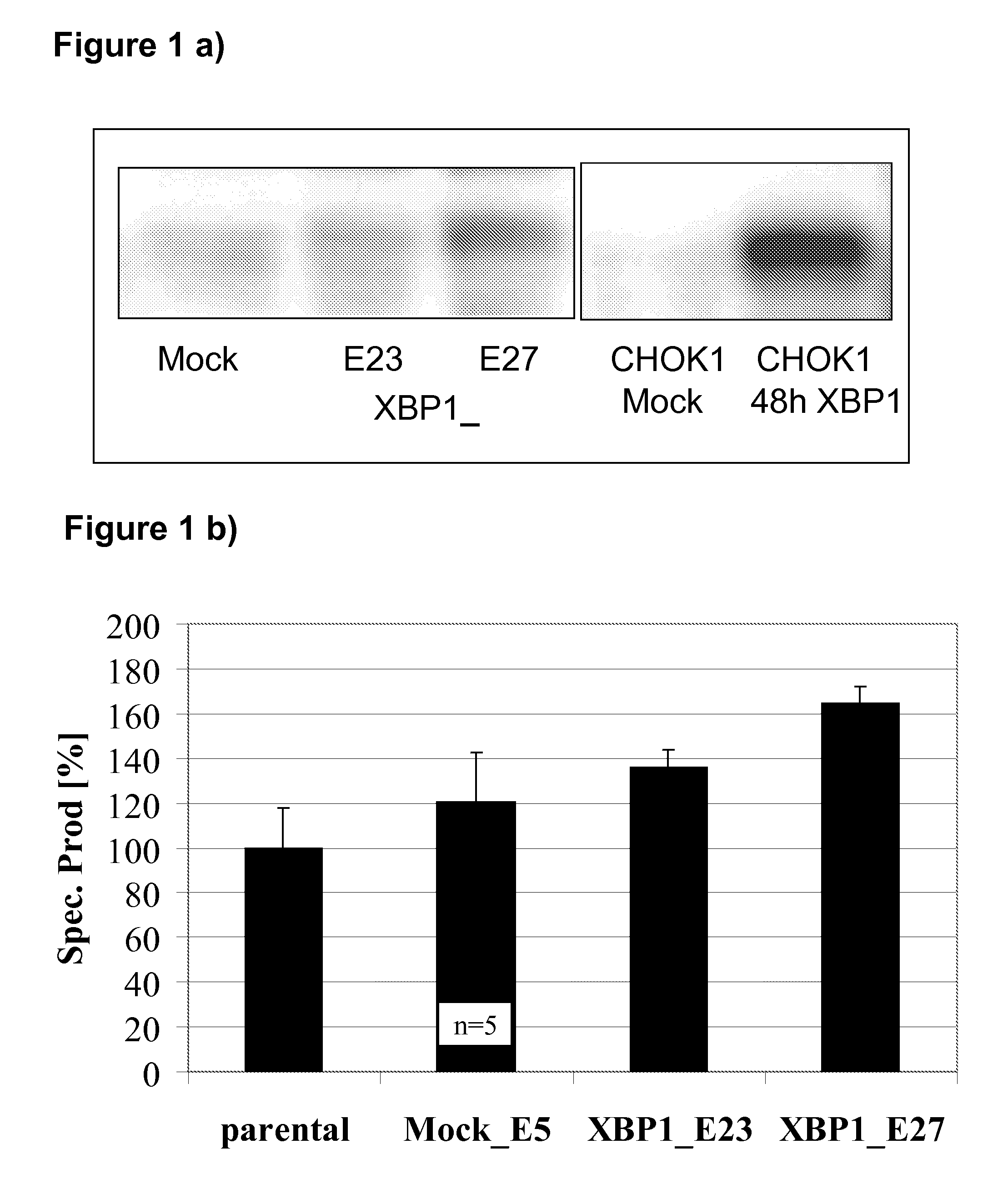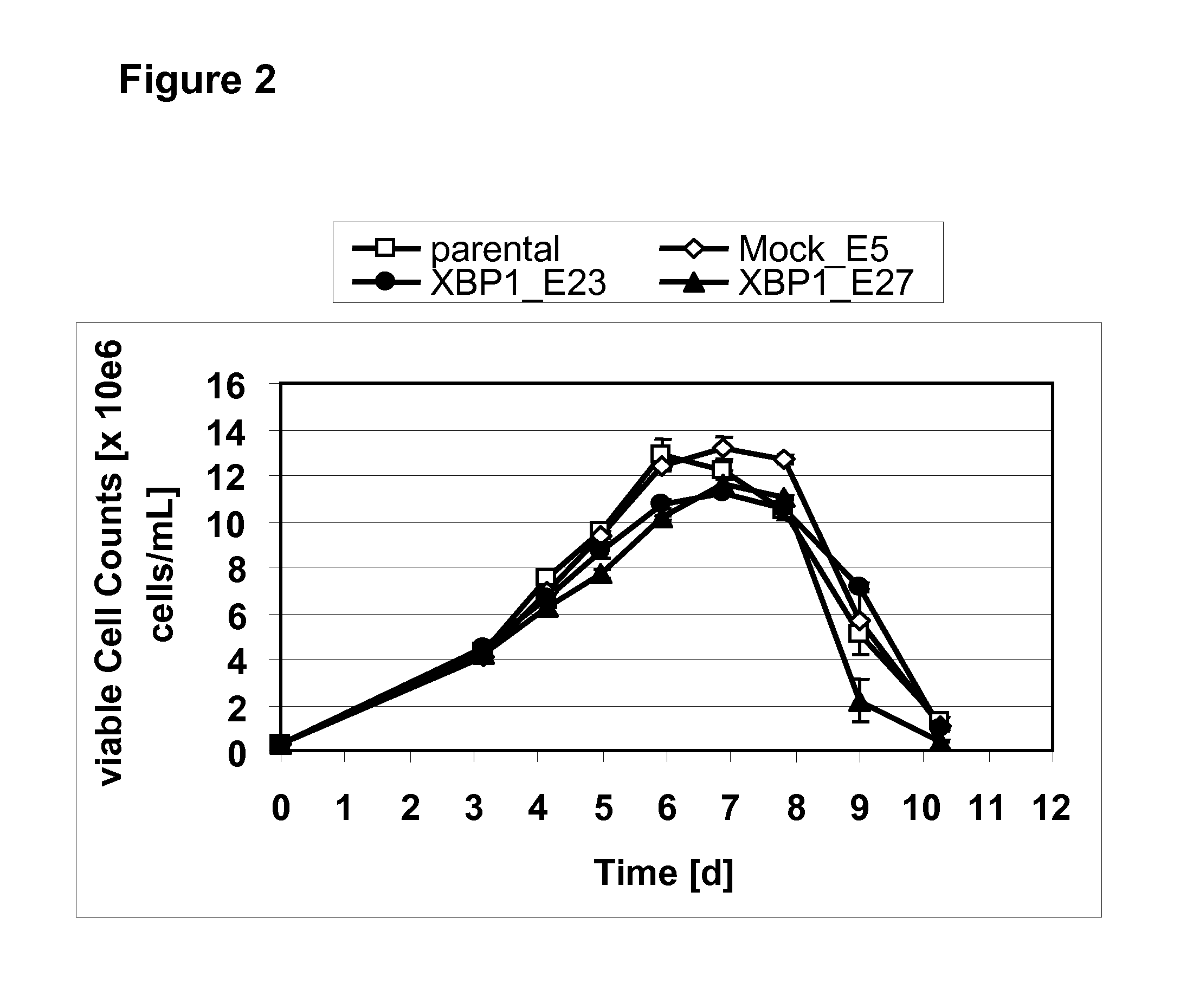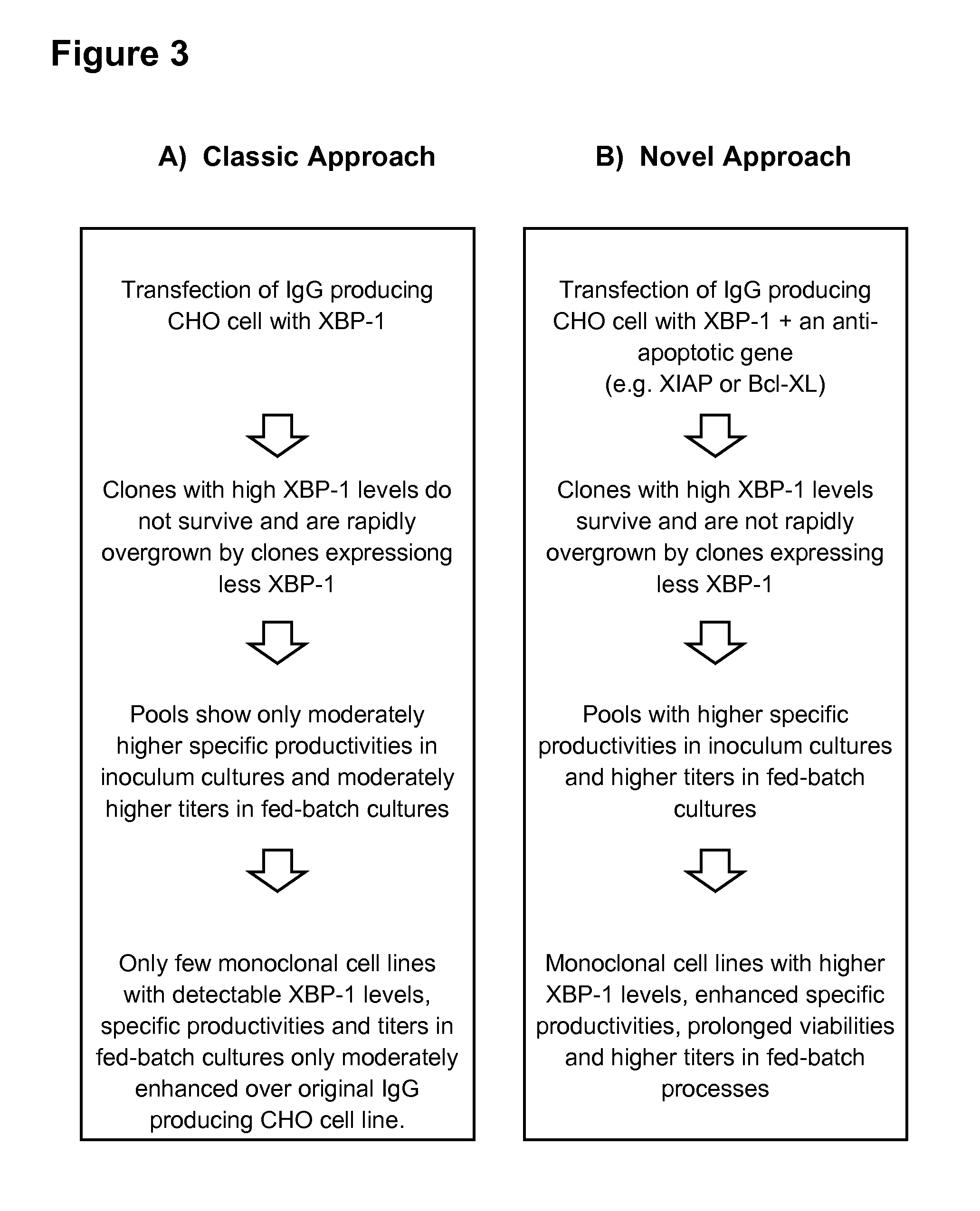The secretory capacity in host cells
a technology of host cells and secretory capacity, applied in the field of cell culture technology, can solve the problems of surprising effects of xbp-1 over-expression reduction in cell growth and survival, and achieve the effects of improving product yield, overall yield, and increasing product yield
- Summary
- Abstract
- Description
- Claims
- Application Information
AI Technical Summary
Benefits of technology
Problems solved by technology
Method used
Image
Examples
example 1
Correlation of XBP-1 Expression Level and Productivity
[0238]A CHO-DG44 cell line expressing a therapeutic IgG molecule (“parental”) is stably transfected with a plasmid encoding XBP-1(s) or an empty plasmid (“Mock”) control. XBP-1(s) transgene expression in monoclonal cell lines is analysed by Western Blot using lysates from transient mock and XBP-1(s) transfections in CHO-K1 cells as negative and positive control, respectively. Out of 14 XBP-1 transfected clones, the two cell lines XBP1_E23 and XBP1_E27 show the lowest and highest XBP-1(s) expression respectively (FIG. 1a) and are therefore selected for further analysis. For a stringent control of the significance of any effect of expression of XBP-1 on productivity, 5 mock clones are also screened and the cell line with the highest specific productivity is selected for all further experiments (Mock_E5). All cell lines are than cultivated according to a 2d-2d-3d rhythm that is typically used in industrial inoculum schemes for large...
example 2
Heterologous XBP-1 Expression Leads to Reduced Growth in Fed-Batch Processes
[0240]To test if the increased specific productivity during serial cultivation translates into higher antibody yield in a production process, the monoclonal cell lines described in Example 1 (parental, mock_E5, XBP1_E23 and XBP1_E27) are analysed in a scale-down fed-batch process format. Shake flasks are inoculated at a seeding density of 0.25×106 cells / mL and cultivated for 10 days with daily feeding and pH adjustment to closely simulate controlled bioreactor conditions.
[0241]As seen in FIG. 2, parental and mock cell lines show an almost identical growth profile. Peak cell densities reached are around 13×106 viable cells / mL for both cell lines. In comparison, XBP-1(s) expressing cell lines grow slower which becomes apparent already at day 5 and in addition reach lower maximal cell densities of about 11×106 viable cells / mL. Together, the growth reduction seen in XBP-1 expressing cell clones results in lower ...
example 3
Heterologous Expression of XBP-1 Results in Reduced Cell Survival in Colony Formation Assays (CFA)
[0242]To quantitatively analyse whether forced expression of XBP-1 bears the risk of increasing the cell's sensitivity towards apoptosis, we make use of the colony cormation assay (CFA), a model system to study cell growth and survival.
[0243]Adherent CHO-K1 cells are transfected either with empty vectors (“mock”) or expression constructs the active, spliced form of human XBP-1, XBP-1(s). After 48 h, the cells are seeded into 10 cm-dishes and subjected to selection using the respective antibiotic, in this case puromycin. Under these conditions, most of the cells die and only those survive which have the expression plasmids stably integrated into their genomes. Following a recovery phase, these cells start to proliferate and grow out to colonies which after 10-14 days are fixed, stained with Giemsa and counted.
[0244]As seen in FIG. 4a, heterologous expression of XBP-1 results in a clear d...
PUM
| Property | Measurement | Unit |
|---|---|---|
| volume | aaaaa | aaaaa |
| concentration | aaaaa | aaaaa |
| pH | aaaaa | aaaaa |
Abstract
Description
Claims
Application Information
 Login to View More
Login to View More - R&D
- Intellectual Property
- Life Sciences
- Materials
- Tech Scout
- Unparalleled Data Quality
- Higher Quality Content
- 60% Fewer Hallucinations
Browse by: Latest US Patents, China's latest patents, Technical Efficacy Thesaurus, Application Domain, Technology Topic, Popular Technical Reports.
© 2025 PatSnap. All rights reserved.Legal|Privacy policy|Modern Slavery Act Transparency Statement|Sitemap|About US| Contact US: help@patsnap.com



